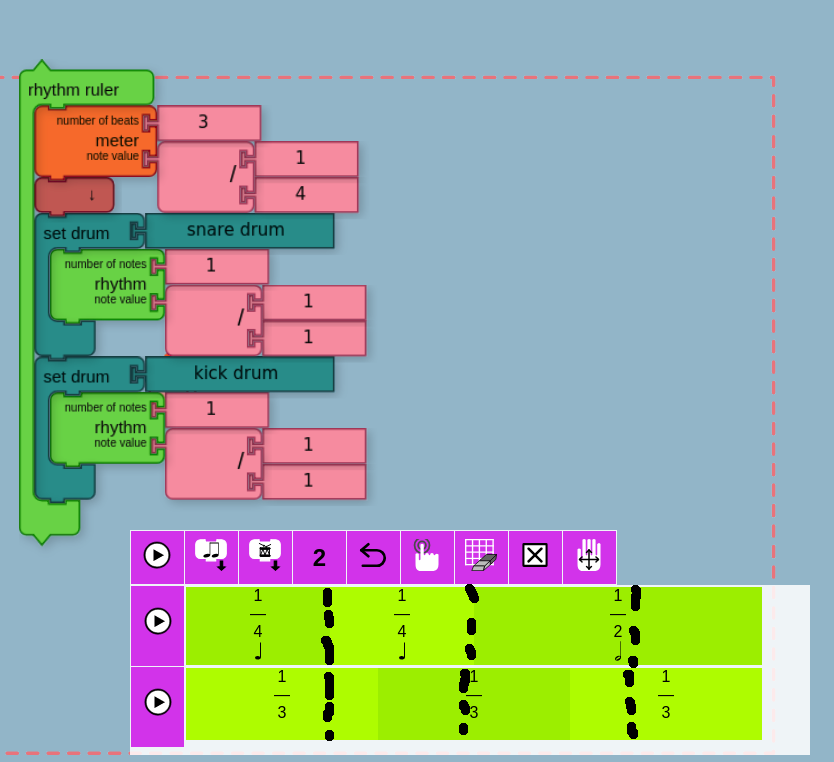What is the purpose of the Widgets?
I was asked recently by a team member for our Music Blocks deployment in Japan what the purpose of the widgets is and how they are intended to be used. This post serves as first in a series of drafts aimed to answer this question. This article will focus on Pitch Time Matrix, specifically.
Why Widgets? Why Pitch Time Matrix?
Music Blocks widgets help a user orient themselves within the abstract world of math, music, and programming. For example, music is constructed mainly of sounds (pitch, drums, etc) over time. Over the centuries musicians have utilized various ways to visualize music. For example, standard western notation helps a person conceptualize music as pitch over time.
However, programming does not traditionally have “pitch over time” in the same way that music does. A programming script is typically top to bottom (and then with various elements left to right) and is read as different actions that a computer is to perform. Musicians may find this to be peculiar and perhaps “unmusical” and I too was very resistant to the representation for music. However, it does open the door for interesting musical ideas to be explored, and explored in way that is impractical within the construct of standard western notation. This being said, “pitch over time” is a very important representation–this is where “Pitch-Time Matrix” comes in.

Pitch Time Matrix helps users to visualize their music as “pitch over time” and export as block code, which can then be used for programming.

Having a feature like Pitch-Time Matrix helps users who would like to visualize their musical creation as pitch over time. Once they have something they like, they can then use their exported code to do things that are more specific to programming and would perhaps be unreasonable to do within the construct of standard western notation.




















Please note that “Pitch-Time Matrix” is now called “Phrase Maker”.